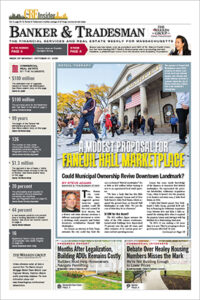Zillow recently put out a report exploring housing recovery in areas hardest hit by the foreclosure crisis, finding – not surprisingly – that those areas have not recovered as quickly and to the extent of their more fortunate neighbors.
The portal’s research is as always nationwide, so we here at Banker & Tradesman thought we’d take a closer look at what’s happened in our local markets.
Excluding municipalities in which there were fewer than three single-family sales in either year, of the 358 cities, towns and neighborhoods that remain, 112 now have median prices lower than 2005, and 12 are at or within $1,000 of their previous peaks. That’s the big picture – more two-thirds of the state is at or over where it was before the crisis and ensuring recession.
But there are areas that are not recovering. A relatively high number of foreclosures is not only one of the reasons, it’s one of the symptoms of how badly certain areas were affected by those difficult years.
Gateway Cities were disproportionately affected by the foreclosure crisis. Many of the residents of those cities are lower-income; the four years of peak crisis – 2007 to 2010 – weren’t good for anyone, but they were a lot worse for some.
Five cities in the commonwealth were in the top 10 in each of those years for both petitions to foreclose (the beginning of the process) and deeds filed at the registries (the last step). The residents of Brockton, Lowell, Lynn, Springfield and Worcester took the brunt of the foreclosure crisis impact. And a decade later, those five cities were still in the top 10 for foreclosure petitions and deeds for 2017.
But of those five cities, only Worcester has not recovered to its 2005 peak median sale price – and the City of the Seven Hills is awfully close. The median sale price of a single-family home for the first 10 months of 2005 was $245,000; for 2018, it was $236,250.
In Brockton, the median price this year is 5 percent higher than in 2005; in Lynn, it is 19 percent higher; in Lowell, 10 percent and Springfield, 11 percent.
And on the other side is an interesting counterweight: of the approximately 10 towns that had no foreclosure petitions or deeds filed at all between 2007 and 2010, one – the tiny town of Alford, population 500, tucked in the southwest corner of the state – is currently 38 percent below its 2005 peak price.
It makes sense that the cities with the most foreclosures would see a slower and longer recovery than others – and they have, relatively speaking. Gains of 5 to 10 percent are paltry compared to the top of list, where places like Cambridge have more than doubled their median prices since 2005 – but those gains are also nothing to sneer at. And they don’t tell the whole story of the Gateway Cities that still have more foreclosures than anywhere else in the state, but whose housing markets continue to improve regardless.





